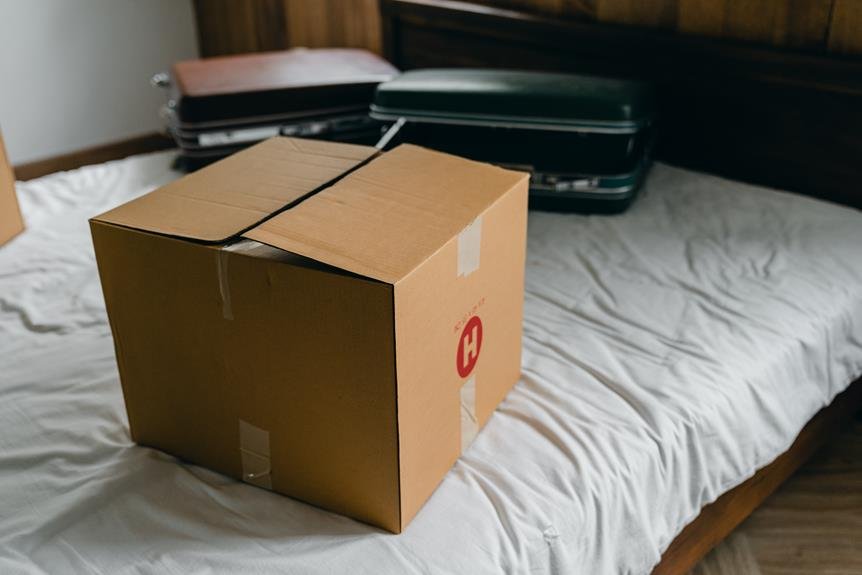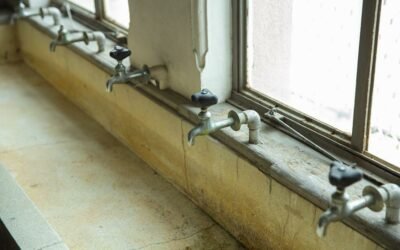Did you know that mold can easily be transferred from one house to another?
Mold spores can travel through the air and attach themselves to clothing and belongings. They can also be brought in through contaminated items or spread via pets and wildlife.
Even during home renovations, mold can be transferred from one area to another.
It's important to be aware of how mold can spread so that you can take the necessary precautions to prevent its transfer.
Key Takeaways
- Mold spores are lightweight and can be carried by air currents, allowing them to travel from one house to another.
- Mold spores can attach to clothing and personal belongings, making them easy to transport and potentially transfer to another house.
- Contaminated items such as furniture, clothing, books, and toys can carry mold spores and contribute to mold transfer.
- Pets and wildlife can carry mold spores on their bodies or in their droppings, leading to potential mold transfer between houses.
Mold Spores Can Travel Through the Air
Mold spores can easily spread from one house to another through the air. These microscopic particles are lightweight and can be carried by air currents, making them highly mobile. When mold grows in one house, the spores can be released into the surrounding environment. If the conditions are favorable, such as high humidity or moisture, these spores can become airborne and travel to neighboring houses.
Once inside a new house, mold spores can settle on various surfaces and start to grow if the conditions are right. They can attach to walls, furniture, carpeting, and even clothing. This is why it's crucial to address mold issues promptly and take preventative measures to prevent its spread.
To reduce the risk of mold spores transferring from one house to another, it's important to maintain good ventilation and airflow within your home. This includes using exhaust fans in bathrooms and kitchens to remove excess moisture, opening windows to allow fresh air in, and using dehumidifiers in areas prone to dampness. Regularly cleaning and inspecting your home for signs of mold growth is also essential.
Mold Can Attach to Clothing and Belongings
When mold spores are released into the air, they can easily attach themselves to clothing and belongings, allowing them to be transported from one house to another. Mold spores are tiny particles that are carried through the air and can easily land on surfaces. Your clothing and personal items can become a breeding ground for mold if they come into contact with mold spores. This is especially true if the items are wet or damp, as mold thrives in moist environments.
If you visit a house that has mold growth, it's important to be cautious about what you bring back to your own home. Mold spores can latch onto your clothing, shoes, bags, and other personal items without you even realizing it. Once these items enter your home, the mold spores can be released into the air and begin to colonize in the new environment.
To prevent mold transfer, it's important to thoroughly clean and dry your belongings after visiting a mold-infested house. Wash your clothes in hot water with detergent and dry them completely before bringing them back into your home. It may also be necessary to clean other items, such as bags, shoes, and furniture, with an appropriate cleaning solution to remove any mold spores.
Mold Can Be Brought in Through Contaminated Items
Be cautious about bringing in contaminated items from a mold-infested house, as they can introduce mold spores into your own home. Mold spores can easily attach to various objects such as furniture, clothing, books, and even toys. These spores are microscopic and can easily go undetected, making it crucial to be aware of the potential risks associated with contaminated items.
To help you understand the importance of avoiding contaminated items, let's take a look at the potential consequences of bringing them into your home:
| Contaminated Item | Potential Consequences |
|---|---|
| Furniture | Mold can grow and spread on the surface, affecting air quality |
| Clothing | Mold spores can become airborne, leading to respiratory issues |
| Books | Mold can damage the pages and release spores into the air |
| Toys | Children can be exposed to mold spores, causing health issues |
| Electronics and Appliances | Mold can damage internal components and affect functionality |
Mold Can Spread via Pets and Wildlife
If you have pets or wildlife in your home, they can unknowingly spread mold spores from one house to another. Here are four ways in which mold can spread via pets and wildlife:
- Fur and feathers: Pets and wildlife can carry mold spores on their fur, feathers, or other external body parts. As they move from one place to another, these spores can be released into the air, potentially contaminating other areas.
- Nesting materials: Wildlife, such as birds or rodents, may use materials contaminated with mold spores to build their nests. When these nests are disturbed or moved, the spores can become airborne and spread to other locations.
- Droppings: Mold spores can be present in the droppings of animals. When pets or wildlife defecate in one area and then move to another, they can easily transfer these spores along with them.
- Tracking: Pets that spend time outdoors can bring mold spores into the house on their paws. As they walk around, these spores can be deposited on floors, carpets, or furniture, leading to potential mold growth in different areas of the house.
To prevent the spread of mold via pets and wildlife, it's important to regularly clean and groom your animals, inspect nesting areas for signs of contamination, and be mindful of where your pets roam. Additionally, practicing good hygiene and cleanliness in your home can help minimize the risk of mold transfer.
Mold Can Be Transferred During Home Renovations
During home renovations, mold can easily be transferred from one house to another if proper precautions are not taken. When you're tearing down walls, removing carpets, or disturbing any areas that could potentially harbor mold, you need to be aware of the risks involved. Mold spores can become airborne during renovations and travel to other parts of the house or even to neighboring houses, leading to potential health hazards for you and your neighbors.
To help you understand the risks and take appropriate measures, here is a table highlighting some common activities during home renovations that can lead to mold transfer, and the precautions you should take to prevent it:
| Renovation Activity | Precautions to Take |
|---|---|
| Demolishing walls | Seal off the work area with plastic sheeting and use proper ventilation. Wear protective gear, including gloves, goggles, and masks. |
| Removing carpets | Wet the carpet to minimize the release of mold spores into the air. Use a HEPA vacuum to clean up any remaining debris. |
| Disturbing insulation | Use a wetting agent to minimize the release of mold spores and work in a well-ventilated area. Consider hiring a professional to handle insulation removal. |
| Replacing drywall | Properly seal the work area and use protective gear. Dispose of moldy drywall carefully to prevent further contamination. |
| Repairing plumbing leaks | Fix the source of moisture before starting any repairs. Clean and dry affected areas thoroughly to prevent mold growth. |
Conclusion
In conclusion, mold can indeed be transferred from one house to another. Mold spores can travel through the air and attach to clothing, belongings, and even pets and wildlife. Additionally, mold can be brought in through contaminated items and can spread during home renovations.
It's important to be aware of these potential sources of mold transfer and take necessary precautions to prevent its spread.






0 Comments